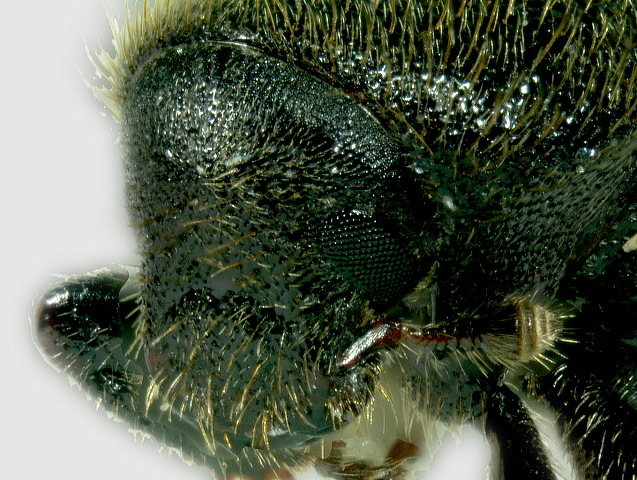Hylurgops incomptus (Blandford 1897)


 Images: Displaying 9 to 15 of 15
Images: Displaying 9 to 15 of 15 




 Hylurgops incomptus
Hylurgops incomptus |
 Hylurgops incomptus
Hylurgops incomptus |
 Hylurgops incomptus
Hylurgops incomptus |
 Hylurgops incomptus
Hylurgops incomptus |
 Hylurgops incomptus
Hylurgops incomptus |
 Hylurgops incomptus
Hylurgops incomptus |
 Hylurgops incomptus
Hylurgops incomptus |
|
| < Prev |

Hylurgops incomptus (by TH Atkinson, Biodiversity Center, University of Texas at Austin).
 Summary of Information
Summary of Information





SYNONYMY
- Hylurgops incomptus (Blandford 1897) Biol. Cent. Amer. 4(6): 145
- Hylastes incomptus Blandford 1897. Biol. Cent. Amer. 4(6): 145
- Hylurgops grandicollis Swaine 1917. Dom. Can. Dept. Agric. Entomol. Br. Tech. Bull. 14: 17
DISTRIBUTION.
Numbers in parentheses after each geographic unit are the number of distinct collection events in the database for that unit. For exotic species generally only countries are listed for localities outside the New World. For further information on published sources of distribution, check the REFERENCES section.
HOSTS
Numbers in parentheses after each host family, genus, or collection method are the number of distinct collection events in the database for that host or method.
REFERENCES
The following are important recent monographs, catalogs, and supplements to catalogs that refer to this species. The specific page on which the reference is made is shown in pink at the end of the reference. In the case of Wood (1982) and Wood & Bright (1992) clicking on the reference page will link to a digital version of the work in question.
- Wood, S.L. 1982. The bark and ambrosia beetles of North and Central America (Coleoptera: Scolytidae), a taxonomic monograph. Great Basin Nat. Mem. 6:1-1356. [84]. (data capture complete)
- Wood, S.L., Bright,D.E. 1992. A catalog of Scolytidae and Platypodidae (Coleoptera), Part 2. Taxonomic Index. Great Basin Nat. Mem. 13:1-1553 (vol. A, B). [33]
- Bright, D.E., Skidmore, R.E. 1997. A Catalog of Scolytidae and Platypodidae (Coleoptera), Supplement 1 (1990-1994). NRC Research Press, 368 pp. [9]
The following are references from which host and distribution data have been input into the database. If one of the above monographs or catalogs also appears in this list, it means that most relevant collection event data have been included.
- . . .
- Atkinson, T.H.; Saucedo C.; E, Martínez F.; E, Burgos S., A 1986. Coleópteros Scolytidae y Platypodidae asociados con las comunidades vegetales de clima templado y frío en el estado de Morelos. Acta Zool. Mex. 17: 1-58.
- Bright, D.E.; Skidmore, R.S. 1997. A Catalog of Scolytidae and Platypodidae (Coleoptera), Supplement 1 (1990-1994). A Catalog of Scolytidae and Platypodidae (Coleoptera), Supplement 1 (1990-1994): -.
- Castorena P., A.E.; Equihua Martinez, A.; Jardel P., E.J.; Rivera C., L.E.; Guzman, R.C. 2020. Scolytinae y Platypodinae (Coleoptera: Curculionidae) de un bosque mixto de pino-latifoliadas de la Sierra de Manantlán, Jalisco, México. Dugesiana 27 (2): 83-90.
- EDRR 2011. USFS Early Detection Rapid Response Database. http://www.fs.fed.us/invasivespecies/earlydetection.shtml/.
- University of Arizona Insect Collection 2016. SCAN: Symbiota Collections of Arthropods Network. http://symbiota4.acis.ufl.edu/scan/portal/collections/misc/collprofiles.php?collid=11.
- Wood, S.L. 1982. The bark and ambrosia beetles of North and Central America (Coleoptera: Scolytidae), a taxonomic monograph. Great Basin Nat. Mem. 6: 1-1356.
- Wood, S.L.; Bright, D.E. 1992. A catalog of Scolytidae and Platypodidae (Coleoptera), Part 2. Taxonomic Index (Volumes A,B). Great Basin Nat. Mem. 13: 1-1553.
 Distribution Map
Distribution Map





Maps automatically open at the center of the plotted points and the scale is set to encompass all map points. Maps can be resized (scale bar at upper left) and the center moved (place cursor over map and drag) to see other parts of the distribution of the species. Clicking on a map marker will pull up collection event data and a literature citation if present. If any errors are found, please refer to the "series code" which is a unique identifier for a database record in any communications). Coordinates have not been entered for all collection records. Localities outside the New World are not plotted, even though they are listed in the distribution summary and in the table of records.
 Collection Records
Collection Records





| No. | Collection data | Publication |
|---|
Return to top of page
